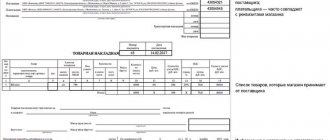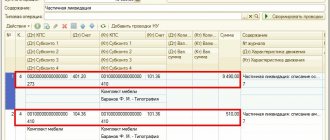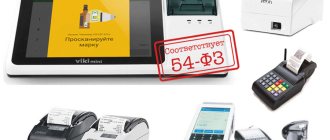Why do you need inventory forms for fixed assets?
The main assets include:
- building;
- structures;
- cars and equipment;
- transport;
- production and household equipment.
The accounting unit is an inventory object. For each object, upon its receipt, a special inventory card for recording fixed assets is created, which is compiled in one copy and reflects the entire history of the object in the organization. It records the facts of movement, revaluation, repair and other events related to the asset. The form is closed after disposal of the fixed assets (sale or liquidation). But after closure, the accounting form must be stored for at least another five years (clause 80 of the Methodological Instructions for Accounting for Fixed Assets, Order of the Ministry of Finance of the Russian Federation dated October 13, 2003 No. 91n).
Use free instructions from ConsultantPlus experts to properly conduct an inventory.
What is an inventory card?
The OS-6 inventory card is a kind of object passport. It contains information about the fixed asset (technical characteristics, useful life, etc.). A separate card must be created for each OS. It does not matter whether a particular object belongs to the company or is leased.
The document is drawn up in one copy. All entries in the card are made when performing any actions with the property registered on it. The basis for making entries is the transfer and acceptance certificate and other documents. You can download the fixed assets inventory card at the end of this article.
Criteria for recognizing a fixed asset
To recognize an asset in accounting as a fixed asset, you must check that certain conditions are met (PBU 6/01):
- the object is intended for use in the production of products, performance of work, or for the management needs of the organization;
- it is expected to be used for a long time (more than a year);
- its further resale is not intended;
- the object is capable of generating economic benefits in the future.
In addition to the listed criteria, RAS for recognition of a fixed assets asset has cost requirements - at least 40,000 rubles. In tax accounting, a minimum cost criterion is additionally established, but there it is 100,000 rubles. The accounting limit is regulated in the accounting policy downwards.
For modern accounting, it is important not only to classify property as fixed assets, but also to determine how to do this. There are high-value assets that come into an organization as separate units, but actually form a single complex because they do not operate separately. In this case, they are taken into account as one OS consisting of several parts. A prime example of this is personal computers. This approach is reflected in the accounting registers - the assignment of a laptop to an inventory card is reflected as participation in the overall system of the organization. It is taken into account both separately and as part of the complex at the same time, along with printers, copying machines and other office equipment that are connected to it.
Is the OS-6 form mandatory?
Since since 2013, the forms of primary documentation approved by Goskomstat have ceased to be mandatory, organizations can develop their own forms of inventory cards. The main thing is that they are enshrined in the Accounting Policy. Also, the documentation must contain the mandatory details listed in paragraph 2 of Art. 9 of the Law “On Accounting” No. 402-FZ dated December 6, 2011. A sample of filling out an inventory card for recording fixed assets will be presented below.
In practice, in addition to the OS-6 form, the following forms are often used:
- Group accounting card OS-6a;
- Inventory accounting book OS-6b;
- form 0504031 for budgetary institutions.
Download the OS-6 inventory card form in Word and create a similar document based on it - this is the most acceptable option for those responsible for accounting for assets in an organization.
Which form to use for asset accounting
After the new accounting law 402-FZ comes into force, organizations have the right to independently develop forms for primary accounting documents. This rule also applies to OS inventory cards. But sometimes a unified inventory card for recording a fixed asset object, OS-6, of the form approved by Resolution of the State Statistics Committee of the Russian Federation dated January 21, 2003 No. 7, is also used. This is what the accounting form that most organizations use looks like:
Form of the unified form OS-6
If document flow in an organization is carried out using unified accounting forms, then analytical accounting of fixed assets (FPE) is carried out using inventory cards according to the unified OS-6 form. Inventory card OS-6 for accounting for fixed assets (the form of which you can download on our website) and instructions for filling it out were approved by Decree of the State Statistics Committee of the Russian Federation dated January 21, 2003 No. 7.
For group accounting of fixed assets, use the unified form OS-6a “Inventory card for group accounting of fixed assets”. OS-6a you can use the ConsultantPlus system. Get free trial access to K+ and proceed to download.
Form OS-6 of the inventory card for recording fixed assets may not be filled out by organizations whose number of fixed assets is small. Such organizations, instead of inventory cards, can keep an inventory book in the OS-6b form (clause 12 of the Guidelines for the accounting of fixed assets, approved by order of the Ministry of Finance of the Russian Federation dated October 13, 2003 No. 91n (hereinafter referred to as the Guidelines for the accounting of fixed assets)).
Since 2013, the use of unified forms approved by the State Statistics Committee has become optional, so it is possible to use independently developed documents of similar content.
Rules for filling out an inventory card for recording fixed assets
An individual accounting card is created at the moment an object of fixed assets is received by the organization. The reason for registration does not matter:
- purchase for money;
- receiving by barter;
- contribution to the authorized capital;
- gratuitous transfer from the founder;
- another method that does not contradict the law.
Regulatory documents define what to write in the purpose of an object in the inventory card - primary information about the asset is entered on the basis of acts of acceptance and transfer of fixed assets, technical passports, and other accompanying documents. At the time of acceptance for registration, you must fill out:
- general section (name and inventory number of the object, its location, date of acceptance for accounting and depreciation group number);
- section 1 (issue date, date and number of the commissioning document);
- Section 2 (acquisition cost, expected useful life);
- section 7 (if the asset has any special quantitative or qualitative characteristics).
Throughout the entire period of use, it is necessary to reflect information about relocation, reconstruction, repair or modernization, revaluation (sections 3, 4, 5 and 6). Data on events that occurred with the fixed asset object during its operation are filled in on the basis of the relevant primary documents.
At the time of disposal, in Section 1 it is necessary to fill in information about the actual service life as of the date of disposal, accrued depreciation and residual value.
Inventory card OS-6: procedure for maintaining and filling out
Inventory cards are designed to record fixed assets, as well as their movement within the organization. An inventory card in the OS-6 form is opened for each fixed asset, and it is recommended to draw up such a document also for leased objects (clause 14 of the Guidelines for accounting for fixed assets).
An inventory card of fixed assets is opened on the basis of the act of acceptance and transfer of fixed assets (forms OS-1, OS-1a, OS-1b). From it, part of the information about the acquired object is transferred to the inventory card for recording fixed assets (sections 1 and 2 are filled out). Also, when filling out the card, information from accompanying documents, for example technical data sheets of manufacturers, is used.
For more details on the types of OS-1 form, see the following materials:
- “Unified form No. OS-1 – act of acceptance and transfer of fixed assets”
- “Unified form No. OS-1a - form and sample”
- “Unified form No. OS-1b - form and sample”.
At the time the OS is accepted for accounting, the card reflects the following information:
- in section 1 - information about the asset as of the date of transfer: date of issue, data on the commissioning document, service life, accrued depreciation, residual value (the section is filled out for objects that were already in operation by the previous owner);
- in section 2 - the initial cost and useful life (they will be needed to calculate depreciation);
- in section 4 - information about the acceptance of the object (details of the acceptance document, department, cost of the fixed assets and the financially responsible person are indicated);
- Section 7 contains a brief individual description of the object.
The remaining sections are filled in as the OS operates. In particular, the following information is entered into the card:
- on the revaluation of fixed assets (section 3);
- movement of the object and its write-off (section 4);
- costs of reconstruction, modernization and repair (sections 5 and 6).
The card is signed by an authorized employee (usually an accountant).
A sample of filling out an inventory card for fixed assets can be downloaded from the link below.
NOTE! In the example of filling out an inventory card for accounting for fixed assets, sections relating to changes in the value of a fixed asset, its repair, individual characteristics, and the accountant’s signature are given on the 2nd page.
How to fill out form OS-6?
The rules for filling out an inventory card for recording fixed assets are regulated by Decree of the State Statistics Committee of the Russian Federation dated January 21, 2003 No. 7. The unified document consists of seven sections.
The completed inventory card for recording a fixed asset item must be signed by the person responsible for its preparation. Form OS-6 refers to the company’s internal documentation, so it is not necessary to certify it with a seal. Inventory cards for property that has been disposed of must be kept for at least 5 years.
Before drawing up the document, the responsible person should familiarize himself with a sample of filling out the OS-6 card.
Sample of filling out an inventory card for accounting for non-financial assets
Accounting form 0504031 includes a header and 5 sections.
The header part is filled in when opening the inventory card of a non-financial asset. The register is assigned a number, information about the institution (name and details) is filled in, and the division in which the facility will be operated is registered. Next, information about the asset itself is indicated: its name and inventory number, the date of acceptance for accounting.
During the life of a non-financial asset, the relevant sections reflect information about the registered fixed asset, all changes and events related to the object:
- changes in value and accrued depreciation;
- data on repair, modernization and conservation;
- about internal movements;
- individual technical, qualitative and quantitative characteristics of the object;
- data on acceptance and disposal (indicating the names of documents, their dates and the reason for write-off).
The inventory card is closed on the date of disposal of the fixed asset. In this case, in section 3 a note is made about the date and reason for the write-off. If the card was generated electronically, then on the date of disposal of the fixed assets it is necessary to make a paper copy and transfer it to the archive.
The sample below will help you figure out how to fill it out.
Filling out inventory card 0504031: sample filling
F.0504031, form
What was meant by group accounting of fixed assets before 01/01/2018?
Until January 1, 2018, group accounting of fixed assets was applied to objects of library collections and similar items of industrial and household equipment worth up to 40,000 rubles inclusive.
At the same time, group accounting of production and household equipment could be carried out while simultaneously meeting the following conditions:
- objects were acquired at a time at one accounting value;
- objects have the same production and economic purpose and technical characteristics.
For objects subject to group accounting, an Inventory card for group accounting of non-financial assets was opened (f. 0504032). At the same time, each of the industrial and household equipment items recorded on the card was assigned an individual inventory number. Inventory numbers were not assigned to objects in the library collection.
Fixed asset accounting card sample form
Currently, almost every enterprise has fixed assets and, accordingly, their records must be kept.
For each such property, its own inventory card is created, one copy for each object. This card is also used when moving or disposing of the main object in the enterprise.
This document contains all the information about the object - its condition, whether repairs were carried out, and so on.
If the enterprise does not have a large number of main objects, then in this case it is not necessary to create a form for each object, but you can record all the information on the main objects in a special inventory journal, which will contain all the necessary information.
Contents of the inventory card of the main objects
This form contains seven sections. This written document must reflect the following information:
- The first section of the fixed asset card contains information about the fixed asset as of the date of its transfer. If the fixed asset is new, then the first section is not filled in;
- The second section contains information as of the date of receipt of this funds. The column that indicates the initial cost of this object indicates the total amount of all expenses that are directly related to the purchase of a new object, excluding VAT;
- The third section of the form indicates information that is recorded in the process of using the object during its revaluation;
- The fourth section provides information about all movements of the main objects. The first entry in this section will be about the acceptance of the object for accounting (its receipt by the enterprise). The next time, during internal movements of the main object, its disposal, appropriate entries are made in the fourth column of the special form;
- In the fifth section of the corresponding form, information is written down after improvements, repairs, partial disposal, due to which changes occur in the original value of the main object;
- The sixth section separately specifies the costs of repairing major facilities;
- In the seventh section, there is a need for filling in a situation where the main object is any precious alloys.
After the form for fixed assets is filled out, the authorized person puts his personal signature.
Below is a typical example and form of a fixed asset accounting card, a version of which can be downloaded for free.









